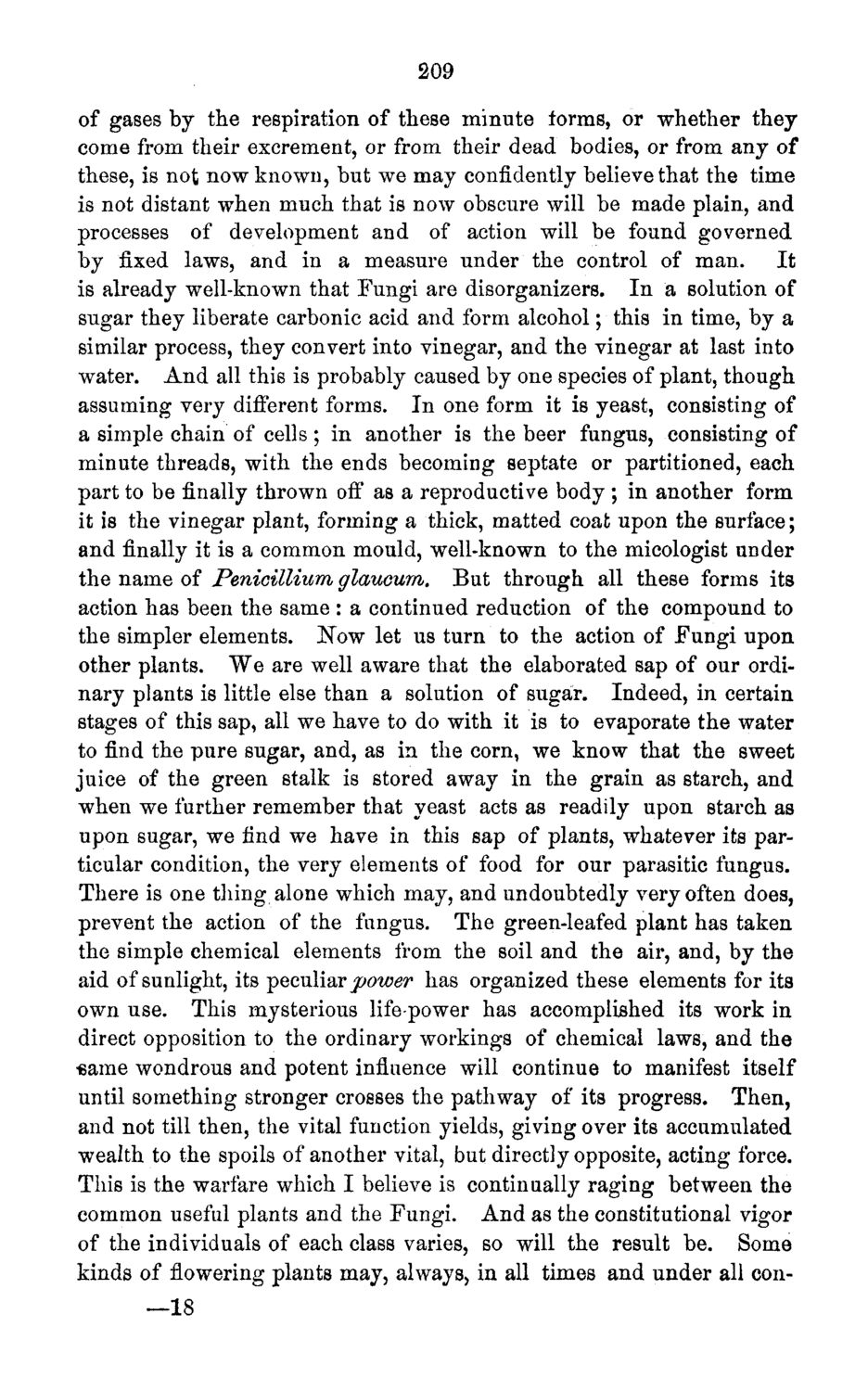| |
| |
Caption: Board of Trustees Minutes - 1871
This is a reduced-resolution page image for fast online browsing.

EXTRACTED TEXT FROM PAGE:
209 of gases by the respiration of these minute forms, or whether they come from their excrement, or from their dead bodies, or from any of these, is not now known, but we may confidently believe that the time is not distant when much that is now obscure will be made plain, and processes of development and of action will be found governed by fixed laws, and in a measure under the control of man. It is already well-known that Fungi are disorganizes. In a solution of sugar they liberate carbonic acid and form alcohol; this in time, by a similar process, they convert into vinegar, and the vinegar at last into wrater. And all this is probably caused by one species of plant, though assuming very different forms. In one form it is yeast, consisting of a simple chain of cells ; in another is the beer fungus, consisting of minute threads, with the ends becoming septate or partitioned, each part to be finally thrown off as a reproductive body ; in another form it is the vinegar plant, forming a thick, matted coat upon the surface; and finally it is a common mould, well-known to the micologist under the name of Penicillium glaucum. But through all these forms its action has been the same : a continued reduction of the compound to the simpler elements. Now let us turn to the action of Fungi upon other plants. We are well aware that the elaborated sap of our ordinary plants is little else than a solution of sugar. Indeed, in certain stages of this sap, all we have to do with it is to evaporate the water to find the pure sugar, and, as in the corn, we know that the sweet juice of the green stalk is stored away in the grain as starch, and when we further remember that yeast acts as readily upon starch as upon sugar, we find we have in this sap of plants, whatever its particular condition, the very elements of food for our parasitic fungus. There is one thing alone which may, and undoubtedly very often does, prevent the action of the fungus. The green-leafed plant has taken the simple chemical elements from the soil and the air, and, by the aid of sunlight, its peculiar power has organized these elements for its own use. This mysterious life-power has accomplished its work in direct opposition to the ordinary workings of chemical laws, and the -same wondrous and potent influence will continue to manifest itself until something stronger crosses the pathway of its progress. Then, and not till then, the vital function yields, giving over its accumulated wealth to the spoils of another vital, but directly opposite, acting force. This is the warfare which I believe is continually raging between the common useful plants and the Fungi. And as the constitutional vigor of the individuals of each class varies, so will the result be. Some kinds of flowering plants may, always, in all times and under all con—18
| |